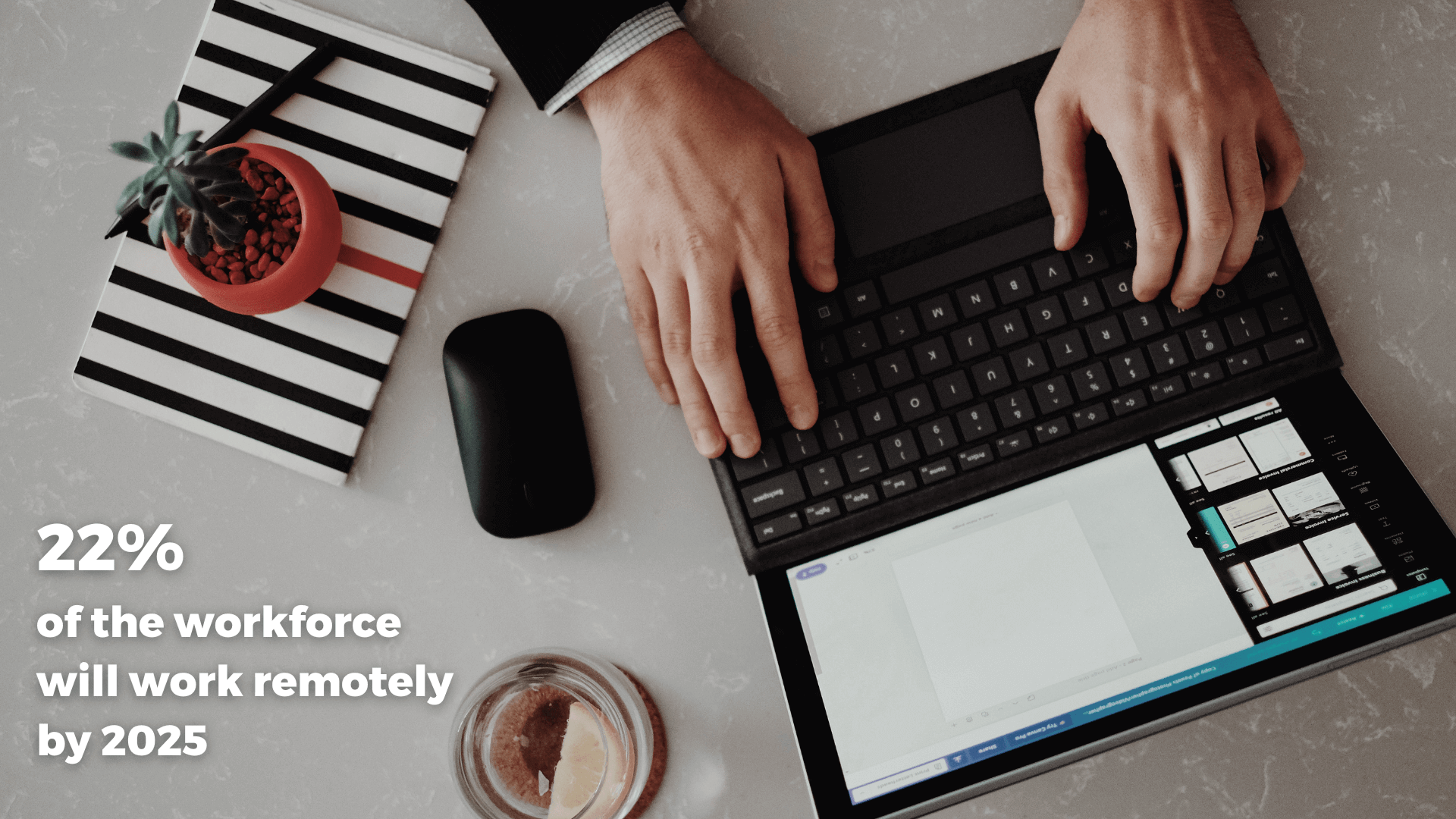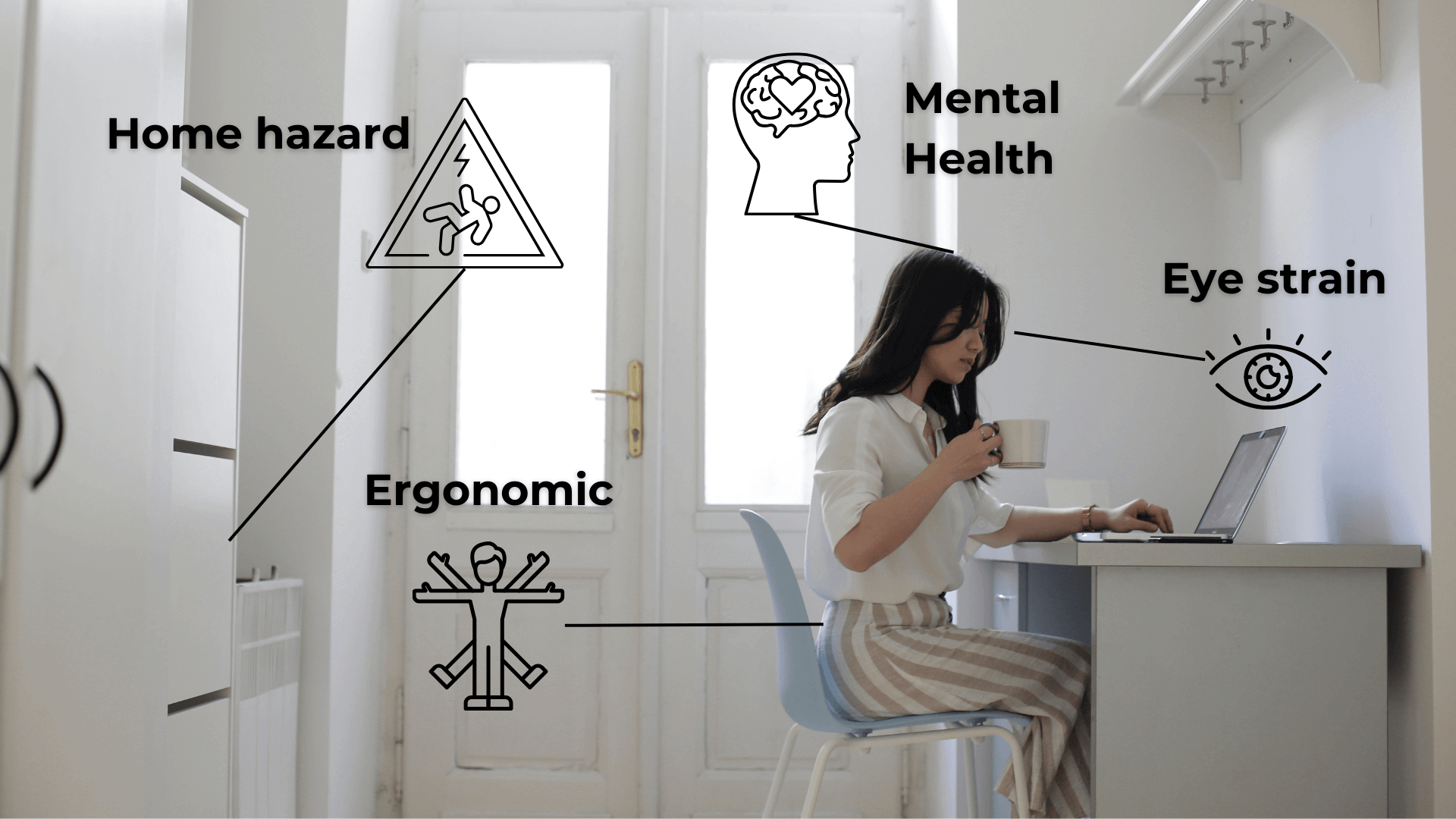
The Rise of Safety Risks Associated with Remote Work
Despite the many benefits, working remotely presents some special safety issues that are not in traditional office settings. Ignoring these issues may have detrimental effects on the productivity and well-being of your workforce.
Ergonomic Risks
Poor ergonomics is one of the most frequent risks associated with remote work. Many remote workers don't have the right office supplies and furniture, which can cause musculoskeletal problems like neck and back strains and repetitive strain injuries. In contrast to corporate offices, home environments are frequently not ergonomically designed, leading to less-than-ideal configurations. Reducing these ergonomic risks in advance is necessary to ensure the safety of remote work.
Eye Strain
Long-term vision issues and discomfort can result from severe eye strain brought on by prolonged computer screen time. Poor lighting and awkward monitor placement add to the problem.
Stress on Mental Health
Mental health has proven to deteriorate by social isolation and a blurring of the lines between personal and professional life. Because their personal and work environments aren't always separate, remote workers may suffer from higher levels of stress, anxiety, and burnout. Encouraging mental well-being is essential to the safety of remote work.
Home Environment Safety
Physical risks associated with home environments include tripping over wires, not being adequately prepared for emergencies, and having distractions that could cause an accident.

Addressing Remote Work Safety Hazards
Identifying the significance of safety in remote work is the initial measure in reducing these risks. These are some tactics to deal with the unseen dangers of working remotely.
Practice Ergonomic Solutions
Offering ergonomic equipment assessments to staff members can greatly lower their risk of developing musculoskeletal problems. Promote the use of desks, chairs, and appropriate monitor stands. Frequent virtual ergonomic evaluations can aid in locating and fixing unsafe configurations, enhancing the safety of remote work.
Promote Eye Health
Encourage staff members to observe the 20-20-20 rule, which states that you should look at something 20 feet away for 20 seconds every 20 minutes. Give instructions for the best possible screen placement and brightness. Another way to lessen eye strain is to suggest screen protectors or glasses with blue light filters.
Promote Mental Health
Provide mental health-promoting initiatives, like online social gatherings, mindfulness training, and counseling services. To preserve a healthy work-life balance, promote taking regular breaks and establishing boundaries. Frequent manager check-ins can improve remote work safety by assisting in the early detection and resolution of mental health issues.
Enhance Home Safety
Give staff members instructions on how to set up a secure home workspace. This entails keeping everything tidy, making sure there is enough lighting, and fastening wires. Employees can establish a safer home office with safety training and resources.
Employ Technology to Monitor Safety
Using technology to its full potential can improve and monitor the safety of remote work. To make sure that remote workers follow safety regulations, use innovative solutions like virtual workspace verifications and continuous safety assessments.
Proactive Remote Work Safety Management Benefits
Proactively addressing the safety risks associated with remote work has many advantages for both employers and employees.
Increased Productivity
A comfortable and safe workplace increases worker productivity. Employers can guarantee that their remote workforce stays engaged and productive by attending to ergonomic issues, eye strain, and mental health concerns.
Reduced Absenteeism
Maintaining a secure home office lowers the risk of injuries related to the job, which lowers absenteeism rates. Employees who feel supported in their work environment are more likely to stay healthy and productive.
Enhanced Employee Well-Being
Ensuring the safety of remote workers is a sign of a company's dedication to their welfare. This raises employee morale, creates a positive work culture, and increases job satisfaction.
Compliance with Regulations
Regardless of the location of the workplace, employers are legally required to guarantee the safety and wellbeing of their workers. By putting in place thorough safety procedures, companies can adhere to health and safety laws, lowering the possibility of legal problems and highlighting the significance of remote work safety.

Conclusion: Safety First, Even When Remote
The shift to remote work has fundamentally enhanced the way we operate, but it has also brought forth unavoidable new safety concerns. Through identification and mitigation of these covert hazards, employers can establish a secure and efficient remote work environment.
We must continue to be alert and proactive in addressing safety hazards as we manage the growing remote workforce. By doing this, we can fully realize the benefits of remote work and develop a more satisfied, productive, and health-conscious workforce that prioritizes remote work safety.
Employee Verify Onboard Connect offers an ideal solution to these challenges, providing comprehensive services that ensure the well-being and productivity of remote employees. From ergonomic assessments to drug screening observations, the platform empowers businesses to prioritize remote work safety effectively. Check out our solutions to keep your remote employees safe and happy!